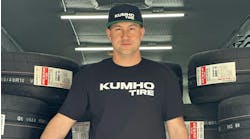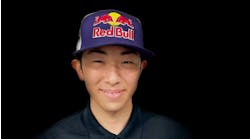The new GP2 and GP3 seasons both get underway at Barcelona with a host of young drivers hoping for a successful campaign that will take them a large step closer to competing in Formula One.
While the GP2 drivers will continue to drive the identical 4.0-liter, 612-horsepower cars that have produced some phenomenal racing in recent seasons, there is a brand new car for the GP3 drivers to get to grips with. The GP3/16, featuring a bespoke 400-horsepower 3.4-liter engine and new aerodynamics, has been designed to promote more overtaking so that young drivers can better develop their skills in combat. As has been the case since GP3 began in 2010, the cars will be equipped with Pirelli tires, which have been optimized for the new racer thanks to redesigned structures and compounds.
In Barcelona, the GP3 drivers will have use of the P Zero hard compound, while the GP2 drivers will also have the soft tire, with a requirement to use both compounds during the feature race.
Pirelli’s racing manager says:
Mario Isola: “It’s exciting to have the GP2 and GP3 seasons beginning on the same weekend, something that hasn’t happened for five years. Although our tires for both championships are different in terms of compound and structure to those we supply for Formula One, they are designed to share many of the same characteristics so that the young drivers develop skills that will be valuable if they make it to the top. They know Barcelona better than most circuits, and have spent a portion of their pre-season testing programs at the track working out how to get the most from their tires there. However, the temperatures ought to be higher than those they experienced then, so nothing can be taken for granted. The warm weather combined with the fast corners and rough surface means wear and degradation is high, so tire management and strategy will be key to a good result, particularly in GP2 with the performance gap between the soft and the medium. In GP3, it will be interesting to see how a race plays out with the brand new car.”
The challenge for the tires:
Speed through the fast corners is crucial to a good lap in Barcelona, and to that effect the cars run with high downforce to ensure good aerodynamic grip. Turn three, a long right-hander through which drivers are constantly accelerating, takes the most life out of the tires, particularly the front-left.
A particularly rough track surface adds to the high wear and degradation experienced at the Barcelona circuit. Tests for GP2 and GP3 have been held at the track prior to the season, but higher temperatures are likely on the race weekend, particularly compared to GP2’s last visit in early March.
Tire management will be a key part of the weekend, as the allocation for GP2 and GP3 is much smaller than it is for F1 (although the races are shorter). The drivers will have to think hard about when to push and when it’s worth taking the life out of the tires in order to gain extra performance. It’s the longest run to the first corner of the entire year, so the start will be especially crucial. With overtaking quite tricky, qualifying up the order is also a priority.
Tire rules:
GP2
Every car will have five sets of dry tires and three sets of wet weather tires available for the GP2 race weekend. The five sets of dry tires comprise three sets of the harder compound (hard) and two sets of the softer compound (soft).
The drivers can use their tire allocation in any way they like, but at least one set of each compound must be used in the feature race (unless it is a wet race). One set of the hard compound must be returned after free practice.
Qualifying takes place at 15:55 on Friday, after practice at 12:00. Race One on Saturday is run at 15:40 over 37 laps and each driver must complete one compulsory pit stop. This cannot take place within the first six laps. Unlike Formula One, the drivers do not have to start the race using the tires they qualified on.
The grid for Race Two on Sunday at 10:25 is determined by the finishing order of the first race, with the top eight positions reversed. Race Two is run over 26 laps, with no compulsory pit stops.
GP3
Every car will have three sets of dry tires and two sets of wet weather tires available for the GP3 race weekend. Only one compound is nominated: hard for this weekend. The drivers can use the tire allocation in any way they like. All the GP3 compounds carry yellow markings.
Drivers are allowed to carry over one tire set from the previous round for use in free practice only. As Spain is the opening race, the carry-over will use tires from the Barcelona test.
There is one practice session, one qualifying session and two races in GP3. Qualifying takes place at 09:45 on Saturday morning, after a single free practice session on Friday at 17:50. Race One starts at 17:20 on Saturday and lasts for 22 laps, followed by Race Two at 09:15 on Sunday (lasting 17 laps). The grid for Race Two is determined by the finishing order of the first race, with the top eight positions reversed.
Latest in Racing
Latest in Racing
Racing
Kenda Announces 2024 Formula Drift Pro Drivers
April 2, 2024
Racing
GT Radial Adds Young Driver to Formula Drift Team
March 29, 2024


